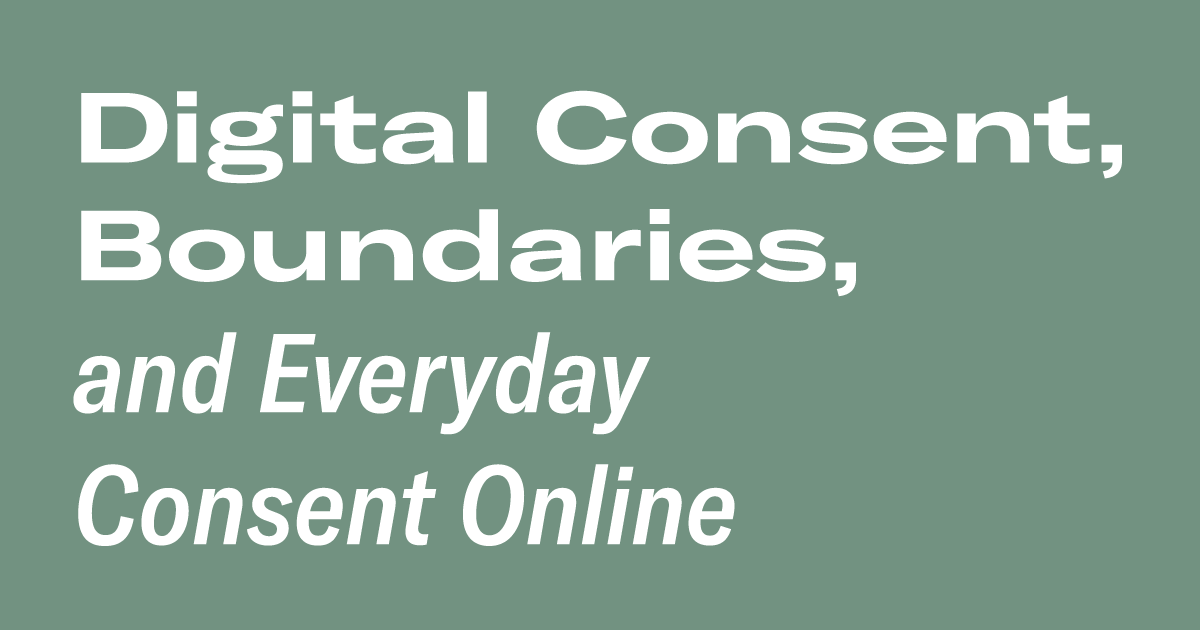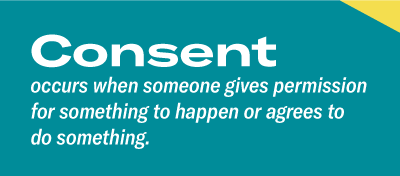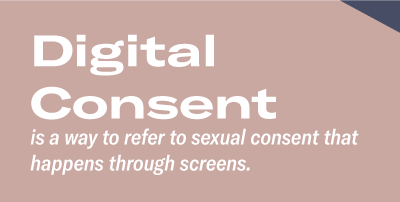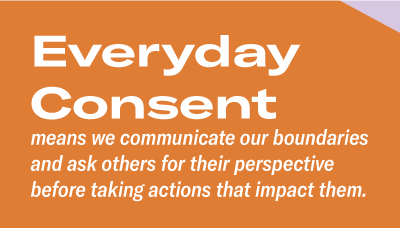
Creating a pathway for respectful online spaces with consent
From apps to online dating websites, there are many ways people are connecting online. Although you aren’t talking face-to-face with someone, consent still needs to be communicated along the way. You should always consider how your actions might make another person feel and ask questions if you don’t know.
Unlike in-person interactions, there may not be body language cues, like eye contact, that can indicate how someone is really feeling. So when we communicate online, it’s important to develop new ways to recognize others’ boundaries and give them the space to recognize our boundaries as well. If we shift from making assumptions to clearly communicating our boundaries and asking questions when we’re not sure, we can create a pathway to more respectful online spaces.
We show respect for ourselves and for others in everyday ways when we practice consent. Consent sets a baseline for using our actions and words to demonstrate the value of others through respecting their limits. Consent gives us a framework for how to communicate boundaries and understand how our choices impact others.
What is consent?
When you ask someone for consent, they need to know specifically what they’re agreeing to, so make sure what you’re asking is clear. Consent also needs to be voluntary, so those who are agreeing should be doing so freely and 100% by their own choosing, without pressure, guilt, or coercion from the person asking. Consent in online contexts and situationsWhen it comes to sexual activities that take place through screens, such as sexting, sending nude photos, or connecting for in-person physical sex, digital consent is a baseline for moving forward.
Just like in real-life sexual encounters, consent should be an on-going conversation when communicating digitally. Although you aren’t talking face-to-face, you should always consider how your actions might make another person feel and ask questions if you don’t know. We can practice digital consent by:
Consent isn’t only important when it comes to sex — there are everyday ways that we negotiate our needs with the needs of others.
We can practice and model everyday consent online by:
|
Additional Resources
- Setting Boundaries for the Holidays During a Pandemic from NSVRC
- Digital Consent in the Age of COVID-19 from NSVRC
- Consent and Social Distancing from Prevent Connect
- Quarantine is an Opportunity to Teach Consent from Men Can Stop Rape
This content was originally developed as a part of NSVRC’s Sexual Assault Awareness Month 2021 campaign resources. The campaign theme “We Can Build Safe Online Spaces” focused on preventing online sexual harassment and abuse. Learn more: https://www.nsvrc.org/saam/2021/about/wecanbuildcampaign

 Consent occurs when someone gives permission for something to happen or agrees to do something.
Consent occurs when someone gives permission for something to happen or agrees to do something. Digital consent is a way to refer to sexual consent that happens through screens.
Digital consent is a way to refer to sexual consent that happens through screens. Everyday consent means we communicate our boundaries and ask others for their perspective before taking actions that impact them.
Everyday consent means we communicate our boundaries and ask others for their perspective before taking actions that impact them.